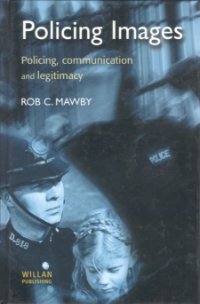By Ben Collier , James Stewart , Shane Horgan, Lydia Wilson and Daniel R. Thomas
Influence policing is an emerging phenomenon: the use of digital targeted ‘nudge’ communications campaigns by police forces and law enforcement agencies to directly achieve strategic policing outcomes. While scholarship, civil society, and journalism have focused on political influence and targeting (often by malicious actors), there has been next to no research on the use of these influence techniques and technologies by governments for preventative law enforcement. With grant funding from SIPR and support from The Scottish Centre for Crime and Justice Research (SCCJR), we have studied how this novel mode of police practice is developing through an in-depth study of Police Scotland’s strategic communications unit and a wider systematic overview of these campaigns across the UK. Key findings: Police Scotland . Since 2018, Police Scotland has had a dedicated team devoted to strategic communications marketing campaigns - developing methods for crime prevention through communications. These adapt classic forms of ‘strategic communications’ and ‘social marketing’ to incorporate novel techniques and tools, tailoring them to crime prevention - particularly the use of behaviour change theory and digital targeting and segmentation infrastructures. These influence (including ‘nudge’) communications go beyond ‘information’ campaigns or those which simply tell or ask the public to do something, and instead incorporate psychological design elements which attempt to alter the decision environment in which members of the public make choices about their behaviour - often linking up with other interventions such as the redesign of public services. In a wider policing context, these innovations can be understood as a development of problem-oriented and intelligence-led policing models in a digital context. The campaigns - focusing on areas with a perceived ‘online’ component, such as violence against women and girls, online grooming, and hate crime - are conceived as part of a public health prevention approach, often using perpetrator-focused adverts to deliver messages to those profiled as ‘at risk’ of offending. This is part of a move away from campaigns which simply rely on telling the public what to do, or which focus on putting the responsibility for crime prevention on victims. There are two main elements to campaigns - the first are attempts to directly change people’s behaviour through ‘nudge’ communications, and the second are wider attempts to shape the cultural narratives that are perceived to contribute to crime. In Scotland, digital targeting is mostly used at the broad demographic level (i.e. age and gender), although some use of fine-detail location and interest-based targeting is evident. Online targeted paid advertising is used in conjunction with conventional media buying, and organic and ‘earned’ communication with stakeholders and civil society partners. Campaigns are largely developed in house, but the media buying and some campaign development is done with commercial advertising and marketing partners. Civil Society stakeholders play a key role in consultation and development of campaigns, and in the ‘organic’ promotion. The digital platforms themselves play a major role in shaping what is possible, sometimes redirecting the intervention through algorithmic processes or promoting organic sharing. Evaluation of the campaigns is able to use some outcome measures but also still relies heavily on ‘vanity’ metrics (such as apparent views and click throughs) provided by the platforms - and effects are difficult to measure. The use of influencers (usually well-known public figures) in some campaigns to amplify messages is a clear innovation - though raises some concerns. These influencers have legitimacy with and knowledge of targeted communities, and generally retain their audiences across multiple platforms (even when these platforms change or fail). We suggest the term Influence officers to describe the professional police communications specialists who design and develop these campaigns, who represent a growing new role in ‘frontline’ policing. The centralised unit and single national force structure in Scotland has had some positive effects when compared to English forces, providing mechanisms for accountability (and saying ‘no’ to unsuitable or harmful campaigns) where more formal structures don’t yet exist. However, this is reliant on the tacit knowledge and expertise of a small group of practitioners - and some aspects of this approach would benefit from being on a more formal institutional footing. Despite its proliferation across the UK, this is a distinctively Scottish mode of ‘influence policing’ and the ‘influence officer’ as a possible emerging role within policing.
Edinburgh: Scottish Institute for Policing Research (SIPR), 2023. 162p.




